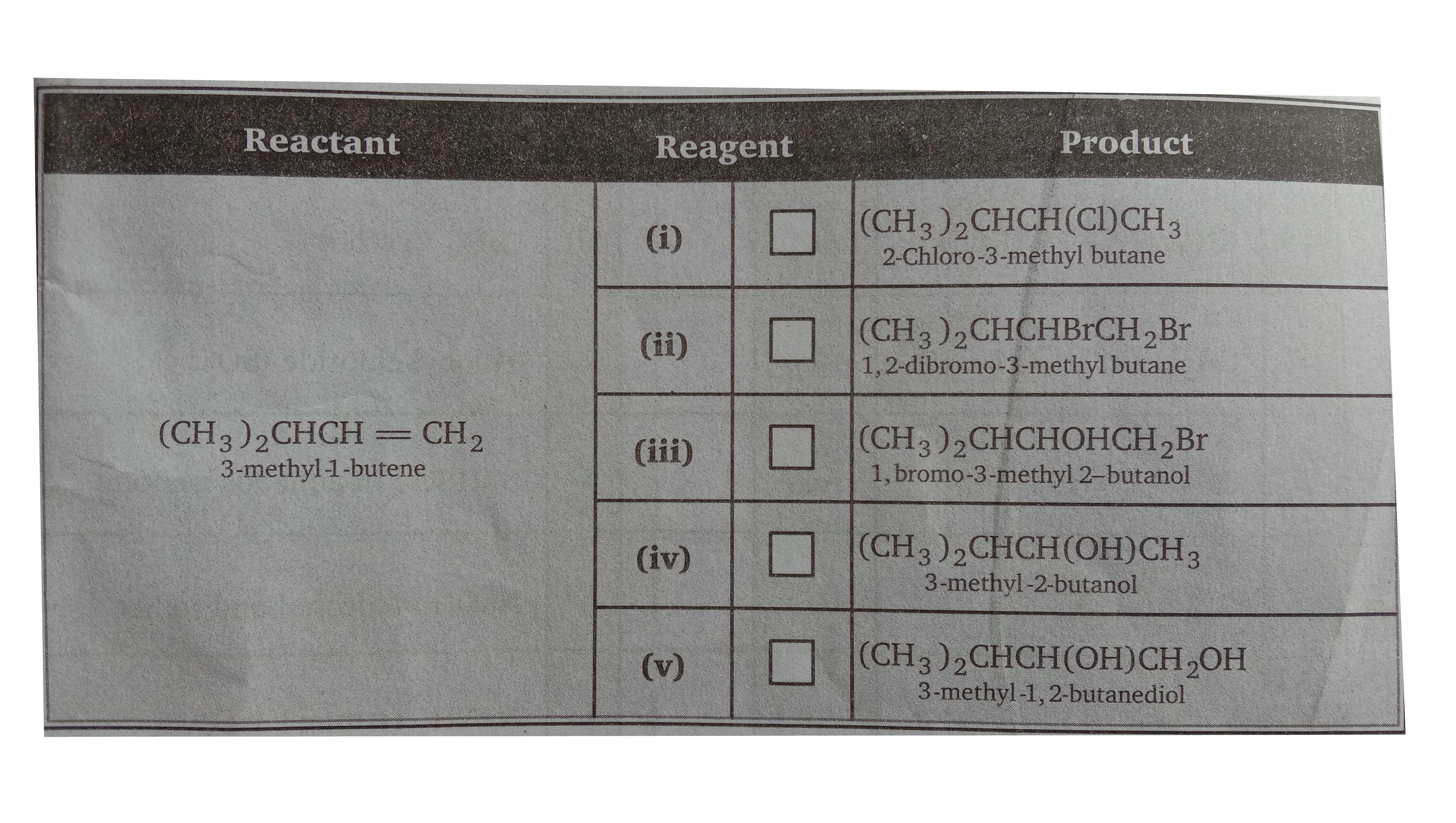In each reaction box write a single letter designating the best reagent and condition selected from the list at bottom of the page. (F.S., → first step, S.S → second step, T.S. → third step)

The correct Answer is:Reaction 1:B, D; Reaction 2:E,F,C Reaction 3:1, A
Reaction 4: LG Reaction 5: B, LC
Topper's Solved these Questions
Similar Questions
 In each reagent box write a letter designating the best reagent and condition selected from the above list of reagents.
In each reagent box write a letter designating the best reagent and condition selected from the above list of reagents.

View SolutionIsobutyl alcohol (2-methyl-1-propanol) (CH3)2CHCH2OH, can be transformed to each of the compounds (a through 1) listed in the left-hand column. In each case the number of steps needed to accomplish the change is noted, and an answer box is provided for your reagent Write letters designating the reagent or reagents you believe will achieve the desired transformation in the box to the right of the product formula. In the case of a multi-step sequence write the reagents in the order they are to be used. In some cases you maywish to use a previously prepared compound as a reactant. If so, write the number (a to 1) corresponding to the desired compound.

View Solution
Knowledge Check
In SN1 reaction, the first step involves the formation of:
Afree radicalBcarbanionCcarbocationDfinal productIn SN1 reaction, the first step involves the formation of :
Afree radicalBcarbanionCcarbocationDfinal productIn S1N reaction, the first step involves the formation of -
Afree radicalBcarbanionCcarbocationDfinal product
Which of the following is//are the rate determining step (s) of the given reaction ?
 .
.
View SolutionWrite the best reagents above each reaction arrow. If the transformation cannot be achieved in a single step by any reagents, write "NR"

View SolutionWrite the best reagents above each reaction arrow. If the transformation cannot be achieved in a single step by any reagents, write "NR"

View SolutionWrite the best reagents above each reaction arrow. If the transformation cannot be achieved in a single step by any reagents, write "NR"

View SolutionWhich of the following is//are the rate determining step (s) of the given reaction ?
 .
.
View Solution

